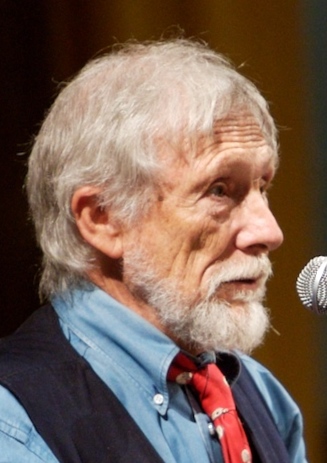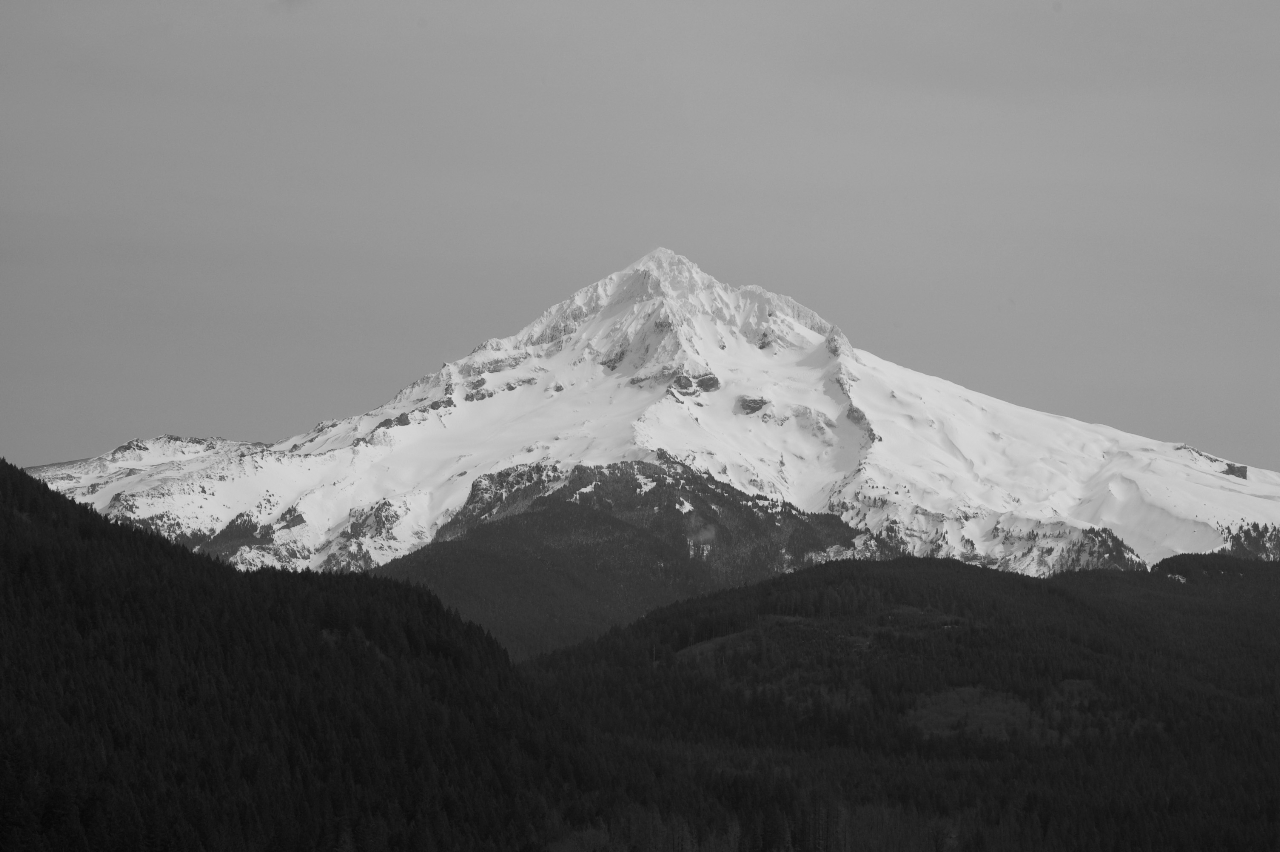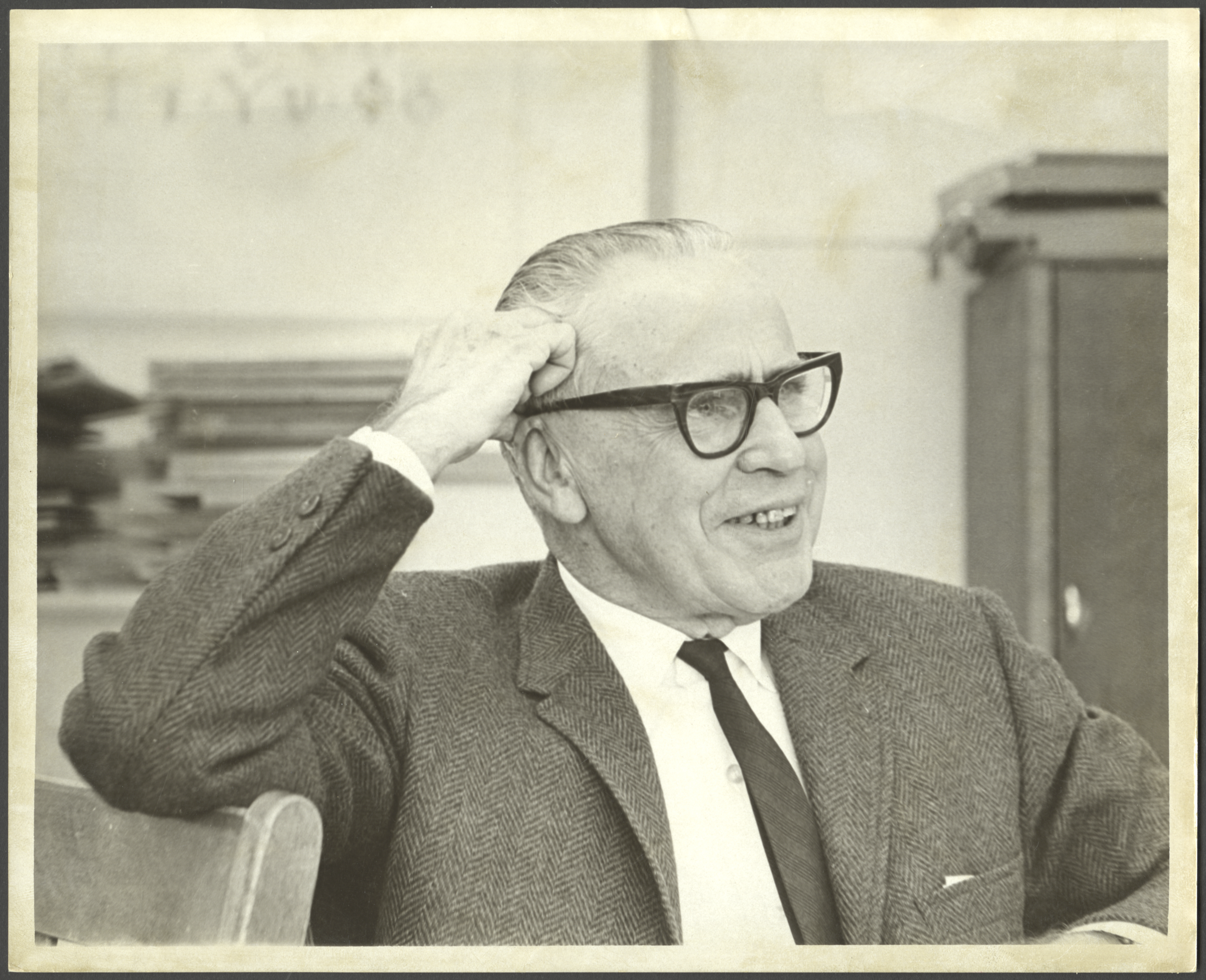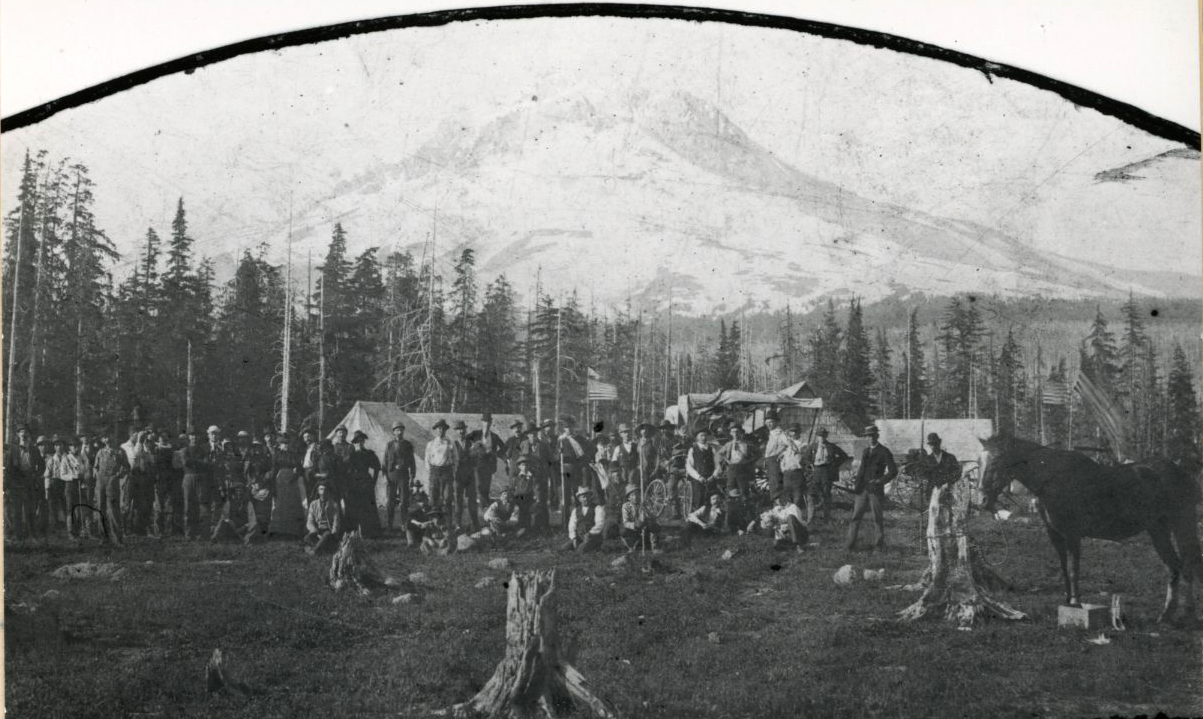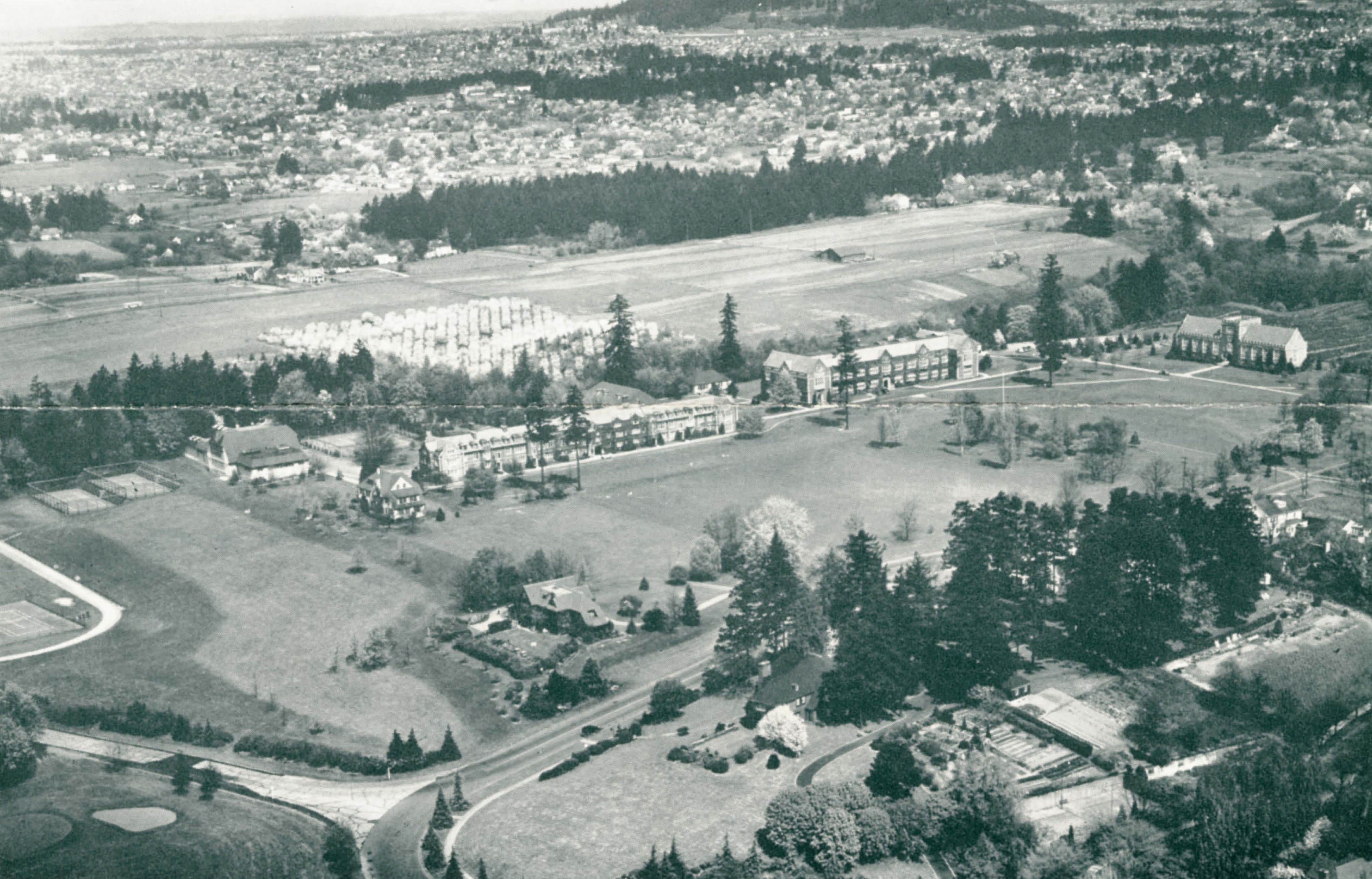Many think of Gary Snyder, Pulitzer Prize-wining poet and essayist, as primarily a Beat writer or as a member of the San Francisco Renaissance. Certainly in his early career he was intimately associated with Jack Kerouac, Lawrence Ferlinghetti, Allen Ginsberg, and Kenneth Rexroth, but his writing was much more a product of the Northwest, particularly Oregon.
Snyder was born in San Francisco on May 8, 1930. When he was two years old, his parents, Harold and Lois Hennessy Snyder, moved to rural Seattle near the northern extremity of Lake Washington. They divorced several years later and Snyder moved with his mother to Portland, where he enrolled at Lincoln High School. Interested in journalism, acting, and, above all, mountains, Snyder wore lederhosen, moccasins, and a Robin Hood hat to classes. He joined the Mazamas mountaineering club and read voraciously in their library. By the time he graduated from high school, he had climbed Mount Hood over forty times and had published his first essay in The Mazama, his mountaineering club's magazine. “I was forever changed by that place of rock and sky,” he wrote in Mountains and Rivers Without End (1996).
A scholarship to Reed College in 1947 changed Snyder’s life. Under the direction of Lloyd Reynolds and other teachers at Reed, he became enraptured with Asian culture and Indigenous peoples. His studies exposed him to the landscapes of Morris Graves and depictions of nature in Chinese scroll painting. His senior thesis was entitled “He Who Hunted Birds in His Father's Village: The Dimensions of a Haida Myth.” Timothy Gray, in Gary Snyder and the Pacific Rim: Creating Countercultural Community, quotes him as saying, “It is curious how in my thesis, I mapped out all of my major interests….Indigenous people bear the deepest insights into human nature and have the best actual way to live as well.”
Reed College and mountain climbing were not the only instruments of Snyder’s Pacific Northwest education. During summers, he worked for the National Park Service at a camp at Spirit Lake, excavated antiquities at Fort Vancouver, worked as a fire lookout for two summers in the North Cascades, and was a choker setter on the Warm Springs Indian reservation. All of his life’s interests initially captivated him during his Oregon youth: mountains, woods, and Asian and Native American cultures.
After graduation from Reed in 1951, Snyder studied anthropological linguistics at Indiana University, but he decided after one term to return to the West Coast and pursue his writing. He enrolled in the Asian Language Program at the University of California at Berkeley to learn Japanese and Chinese and began to publish his poems in literary magazines. In 1955, he read “Berry Feast” in the company of Jack Kerouac and Lawrence Ferlinghetti at the famous Six Poets at Six Gallery reading, where Allen Ginsburg first read “Howl.” Many cite this event as the beginning of the San Francisco Renaissance.
In 1956, Snyder took a freighter to Kyoto, Japan, where he studied Zen Buddhism and worked for American Zen pioneer Ruth Fuller Sasaki. During his ten-year primary residence there, he visited the United States for the publication of Riprap and Cold Mountain Poems (1959) and Myths and Texts (1960). He returned to the United States for good in 1970 and built a home, named Kitkitdizze, in the foothills of the Sierra Nevada Mountains.
During his Reed years, Snyder married Alison Gass, but they divorced after seven months. He married Joanne Kyger in 1960; they divorced in 1965. In Japan, he married Masa Uehara in 1967; they had two sons, Kai, born in 1968, and Gen, born in 1969. Snyder and Masa divorced in 1989. In 1991, Snyder married Carole Koda and lived with her until her death from cancer in 2007.
Snyder leaped from being a regional poet to national acclaim in 1974 with the publication of Turtle Island, which received the Pulitzer Prize the next year. Turtle Island was a political text that aimed to teach readers how to "be" in North America. Turtle Island, Snyder writes in the volume’s introductory note, is “the new/old name for the continent based on many creation myths of the people who have been living here for millennia.…A Name: That we may see ourselves more accurately on this continent of watersheds and life communities.”
Snyder’s next bestseller was Axe Handles (1983), a less political collection of poems that espouses how to live in the world, especially as a family. Additionally, his intense submersion in environmental concerns, Zen Buddhism, and Native American, Chinese, and Japanese culture, permeate all of his works.
Since the publication of Axe Handles, Snyder has published many other works (mostly prose), lectured widely, and taught creative writing at the University of California at Davis. He was inducted into the American Academy of Arts and Letters in 1987. In 1996, he published a volume of poetry, Mountains and Rivers Without End, which he had been revising for forty years. For that volume he was awarded the Bollingen Prize for Poetry in 1997. In 2004, Snyder published Danger on Peaks, his first collection of new poetry in twenty years. He is now a professor emeritus of English and continues to live in the Sierra Nevada foothills.
-
![]()
-
![Mount Hood from Lolo Pass Road]()
Mount Hood.
Mount Hood from Lolo Pass Road Courtesy Jon Bell
Related Entries
-
![Lloyd Reynolds (1902–1978)]()
Lloyd Reynolds (1902–1978)
Lloyd Reynolds is an iconic figure in Pacific Northwest calligraphy. He…
-
![Mazamas]()
Mazamas
The history of the Mazamas began in early 1894 when William Gladstone S…
-
![Reed College]()
Reed College
Situated on 116 acres in southeast Portland, Reed College enrolls nearl…
Map This on the Oregon History WayFinder
The Oregon History Wayfinder is an interactive map that identifies significant places, people, and events in Oregon history.
Further Reading
Gray, Timothy. Gary Snyder and the Pacific Rim: Creating Countercultural Community. Iowa City: University of Iowa Press, 2006.
Murphy, Patrick D. Axe A Place of Wayfaring: The Poetry and Prose of Gary Snyder. Corvallis: Oregon State University Press, 2000.
Murphy, Patrick D. Understanding Gary Snyder. Columbia: University of South Carolina Press, 1992.



